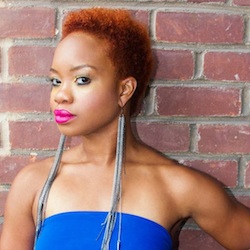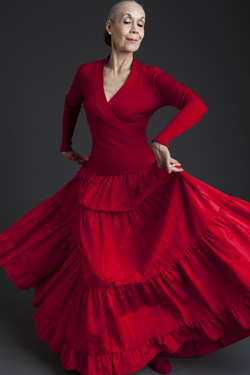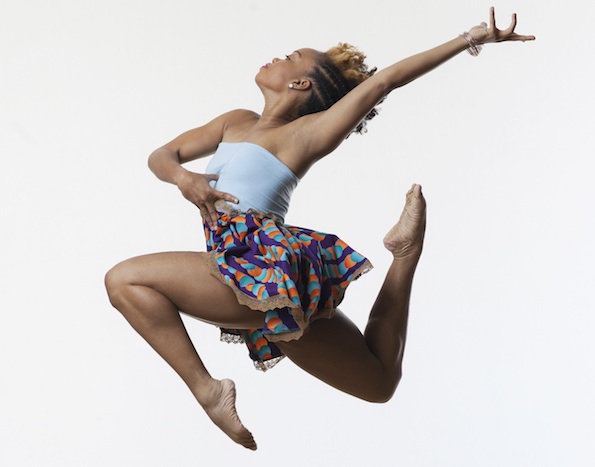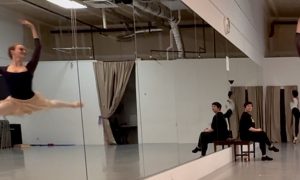By Katherine Moore of Dance Informa.
“Anytime an artist is given the opportunity to explore, invent and discover, it’s something to celebrate,” says choreographer Camille A. Brown on the subject of her upcoming Princess Grace Foundation-USA Works-in-Progress residency in April at Baryshnikov Arts Center (BAC) in New York City.
BAC, founded in 2005 by Artistic Director Mikhail Baryshnikov, is one of the premier arts institutions in New York. Designed as a creative and performance space for artists across a variety of disciplines, one of BAC’s hallmark services to the arts community is its residency program. Hosting up to 30 artists a year in the fields of dance, theater, music and multimedia, residency artists are given the time and space to do what they do best: create.
In addition to technical, administrative, networking and financial support, residency artists at BAC receive up to three weeks of studio time to develop their work in relative freedom.
Eleanor Wallace, Program Manager at BAC, stresses the importance of this “no pressure” creative experience.
“We recognize that dedicated studio time, without interruption, is precious. It is our primary goal to establish a supportive environment that affords artists the quietude and independence they need to create. At the same time, we make it clear that the door is always open should an artist need technical, administrative or other kinds of support,” says Wallace.

Camille A. Brown. Photo by Ra-Re Valverde.
The logistics of finding affordable rehearsal and creative space can often be a nightmare for New York-based artists where space is always in huge demand. As a result, artists are often pressed for time and do not often have the luxury of a long creative process. Wallace explains that having a dedicated space to create for a significant length of time is necessary for producing quality work.
Brown, working on upcoming projects for her company Camille A. Brown and Dancers, agrees with Wallace.
“Too often choreographers are rushed to produce quality work in a short amount of time. The residency at BAC will give me the time to have a real creative process and to infuse theater into my work through tedious exploration, which is crucial to my growth as an artist and director,” says Brown.
Designed with artistic needs in mind, BAC boasts four large, column-free studios, naturally lit by windows with expansive views of the city. In a city plagued with cramped, windowless studios obstructed by columns and other supports, the chance to rehearse in such an expansive space is a unique opportunity for BAC residency artists.
Since 2005, BAC has offered more than 150 residencies by invitation-only. With no formal application process, BAC takes special interest in supporting artists at varying stages of their careers who emphasize innovation and collaboration in their work.

Carmen de Lavallade. Photo by Julieta Cervantes.
The spring lineup of residency artists runs the gamut from theater director Daniel Fish to choreographer/performer Carmen de Lavallade. De Lavallade will be working with director Joe Grifasi and co-writer/dramaturg Talvin Wilks on As I Remember It. The project, made possible through the National Dance Project Production Grant, will be an autobiographical journey of de Lavallade’s seven-decade career told through dance, film and writing.
Wallace also highlights the recent technical residency of LeeSaar The Company as it continued its work on Princess Crocodile, a piece it first developed during its residency at BAC in the spring of 2013. The company will have its New York premiere of the work at BAC’s Howard Gilman Performance Space on April 10 and 11.
With collaboration always at the forefront, BAC will be partnering with Lower Manhattan Cultural Council (LMCC) to support French choreographer Emmanuelle Vo-Dinh this May. With support from BAC and LMCC’s Extended-Life Dance Development Initiative, the two organizations are joining forces to better support the artist.
“Collaborating with another institution is a great way to augment the support we already provide to artists… so I expect it will be a very rich experience both for her and NYC’s artistic community,” says Wallace.
As many of the projects developed at BAC later go on to be performed in venues around the world, the BAC residency program is truly an open door of support for New York-based and international artists by providing the space to eventually bring artistic innovation into broader communities, one residency at a time.
Photo (top): Camille A. Brown. Photo by Matt Karas.













